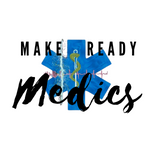
In EMS education, moulage plays a crucial role in preparing students to handle the realities of emergency situations. Moulage refers to the application of makeup, prosthetics, and other materials to simulate injuries or medical conditions on training mannequins or actors. The goal is to create as realistic a scenario as possible, allowing students to experience the sights, sounds, and even the smells they might encounter in the field.
The term moulage comes from the French verb “maquiller,” meaning “to mask” or “to disguise.” This technique has been used since 1794 when Guillaume Dupuytren first documented its use in medical education. Over the centuries, moulage has evolved into an essential tool for training healthcare professionals, helping them develop their clinical skills in a controlled, yet realistic environment.
Why Moulage Matters in EMS Training
Moulage is often reserved for high-stakes skills assessments, like state or national exams. However, it can be an incredibly effective tool for day-to-day classroom training. Many EMS students find it challenging to fully immerse themselves in a scenario when they know it’s just a simulation. They might say things like, “If this were a real patient…” or “I can’t imagine what’s actually going on.”
Using moulage to simulate burns, cuts, fractures, or other injuries adds a layer of realism that can help students move beyond the academic and into the affective realm of learning. By visually and emotionally engaging students, moulage helps bridge the gap between theoretical knowledge and practical application.
The Power of Distraction in Learning
One of the most effective ways moulage can enhance training is by creating visual distractions that force students to prioritize patient care. For instance, a simulated burn might look severe and grab attention, but the real challenge lies in assessing for more critical injuries like airway compromise or shock. This teaches students to focus on the most life-threatening issues, rather than getting distracted by dramatic visuals.
By integrating realistic wounds or medical conditions into training scenarios, instructors can create an environment where students must manage their emotions and focus on the tasks at hand—just like in real-life emergencies.
Moulage and the Three Domains of Learning

Much like any other aspect of EMS education, moulage ties into the three domains of learning: cognitive (knowledge), psychomotor (skills), and affective (mindset). While most EMS training focuses on the cognitive and psychomotor aspects—memorizing protocols and mastering hands-on skills—the affective domain is often overlooked.
Moulage brings the affective domain to the forefront by challenging students to manage their emotional responses in high-stress, visually intense scenarios. It helps students not only learn how to treat injuries but also how to react in the presence of graphic trauma, keeping their focus on patient care.
Improving Skills with Moulage Training
Attending a moulage workshop, such as those offered by Moulage Concepts, provides instructors and students alike with the skills to create realistic injury simulations. These workshops teach participants how to apply makeup, use prosthetics, and build scenarios that mimic real-world emergencies. The result? More immersive training sessions that enhance both clinical skills and the emotional resilience needed for fieldwork.
By incorporating moulage into your EMS training, you can create realistic, emotionally charged scenarios that help students sharpen their critical thinking, improve their hands-on skills, and prepare for the unpredictable nature of emergency medical services.
